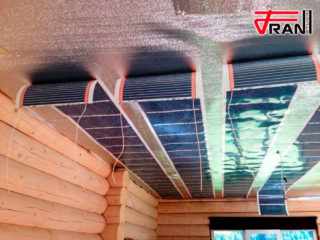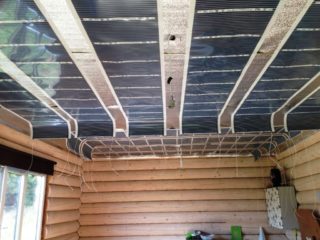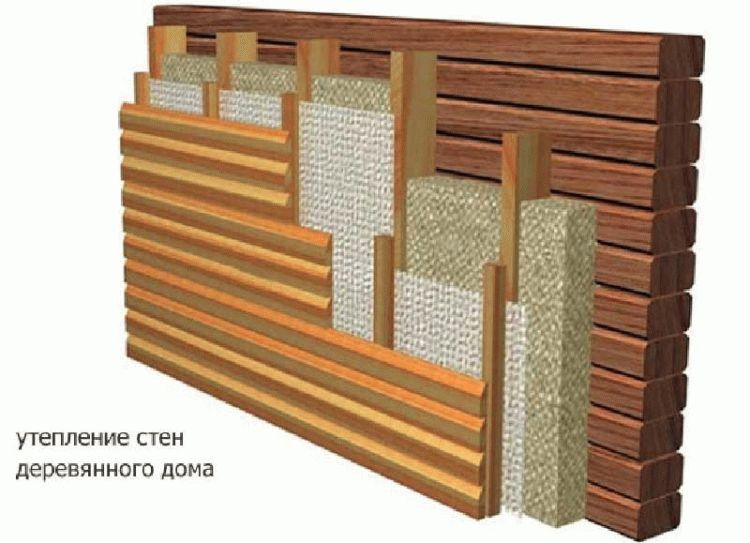One of the most important factors in the construction of communication systems of a building is the maximum efficiency and economic efficiency of their operation. This is especially true for heating systems.
How ceiling heating works
The principle of operation is that the electric current heats the resistors to a certain temperature (+35 -55 degrees), the resistors emit infrared waves with a length of 9-12 microns, heating objects in the range of the wave, which, in turn, give off secondary heat to the room : walls, furniture, interior items, etc.
Nuances of installation and calculation
The power of a radiant heater manufactured by manufacturers is from 125 W to 150 W. In width it can be from 30 to 120 cm, in length - from 1 to 7 m. The complexity of installation of this device will depend on its size and characteristics of the ceiling covering.
Heaters with a power of 150 W are most often used. However, in each specific case, a calculation made by a specialist is required. The technical parameters of the room are very important here: size, ceiling height, characteristics of the finishing and heat-insulating material, etc.
On average, the power consumption of a ceiling heater is about 55 W per 1 meter of heated area. With a sufficient heat barrier at home, electricity costs will be approximately 6 kW per 100 sq. m of living space. If we compare these indicators with heating by means of electric convectors, it is obvious that the cost of electricity is reduced by three or more times. It is not for nothing that manufacturers of infrared heaters position this method as the most energy-efficient.
Benefits of infrared heating
Another advantage of this heating method is its safety.The low voltage inside the reflective foil eliminates the possibility of fire. The reliability of the heater is ensured by the fact that the resistors in the film are mounted in separate modules: if one is mechanically damaged, all the others remain.
It is still difficult to talk about the maximum service life of heaters, since such devices have not yet been tested by time, however, manufacturers guarantee the infrared heating system for at least twenty-five years of operation and a two-year warranty for identifying possible defects.
This heating system is undoubtedly suitable for any room, but it is especially good for use in wooden houses. The thing is that the tree absorbs moisture abundantly during the precipitation period, which leads to its deformation. At a minimum, the timber darkens, as a maximum, it rots and becomes a good breeding ground for tree parasites and fungi. Ultimately, all this leads to the destruction of the entire building. In this case, a radiant heater is the best protection against moisture and freezing. Due to the fact that the walls, as well as furniture and other objects, are primarily heated from the ceiling, moderate heat is stably maintained in the room, which creates an optimal microclimate for wood.
The developers of the infrared heating system took care of the efficiency, safety and economy of products - the most important criteria for these communications. Today these systems are used in many countries around the world and receive a lot of positive feedback.











It is already the third year that we have been using foil underfloor heating and are very satisfied. However, in the village where we live, the electric grids are old, the wires are thin, stretched back in the years of the electrification of the USSR, there is only one transformer, etc. therefore, this winter there is simply no possibility for normal heating of the house. Such power surges that the sensors begin to click and have to be turned off. Already 3 burned down. We have a Resant at the entrance, but that doesn't help either. What to do?
We made ourselves such a film heating on the ceiling back in 2013. It warms well, even the floor is slightly warm from it. It feels very comfortable, even the sofa and armchairs are warm. Better than convectors. With them the air became somehow heavy. And then the opposite. The air is slightly cooler than the floor and walls. In general, if you choose from electric heating, then there is no need for another. My personal opinion!